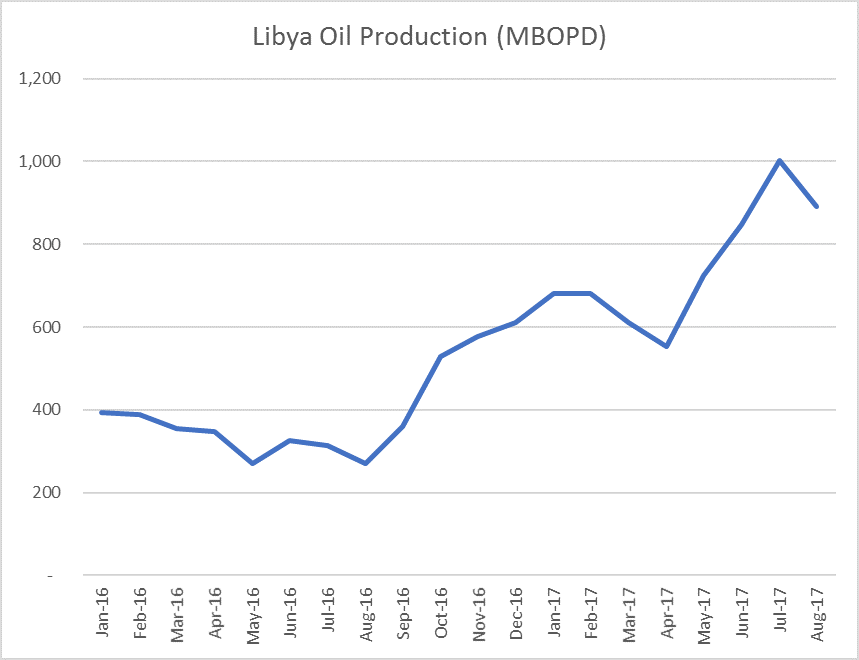Unrest Forces Field Shutdown
Oil production in Libya was forced to decrease today, in the latest of a series of disruptions that is becoming all-too familiar.
The Sharara oilfield, the largest field in Libya was forced to shut in production yet again, as armed groups disrupted activity. According to Bloomberg, Sharara produced about 234 MBOPD the day before workers were forced to stop production. This represents almost one quarter of all the North African producer’s output, as pre-shutdown activity hovered around 1 MMBOPD.
In this case, the armed group is demanding backpay, the release of some of its members who are under detention and supplies of fuel to the southern region of the country. Production has been shut down for three days, though it seems that order may be restored soon. According to Bloomberg, Libya’s NOC Chairman gave orders to restart production on Tuesday after talks with several groups to resolve the issue.
Many disruptions have occurred in the past
This is a familiar story in Libya, where armed groups regularly shut down production from oil fields. In August, for example, the Sharara field was shut down for two weeks as militia groups obstructed pipeline flows. Problems also appeared in September. According to Reuters, a group from southwest Libya threatened to close the field over the detention of two members of a political delegation. Unlike some previous pressures, in this case the threat did not seem to amount to anything and the ultimatum set by the group passed without the field coming offline.
Targeting 1.25 MMBOPD
Libya is working to restore production to historic levels, but has had only limited success. Libya produced about 1.6 MMBOEPD before the 2011 revolt, but the upheaval following Muammar Gaddafi’s overthrow severely curtailed production. The country is currently capable of producing at least 1 MMBOPD, but this level is rarely sustained for a prolonged period of time, as various parts of the country’s infrastructure can be targeted by militia groups.
However, the country has made some progress. Production in October 2016 averaged 528 MBOPD, less than current levels when Sharara is offline, much less when all operations are proceeding smoothly. Libya currently is targeting production of 1.25 MMBOPD in December, and is not likely to intentionally limit its production until this is achieved.

While Libya has not yet been able to secure its oil production, there were positive headlines earlier this week. Benghazi’s commercial port officially reopened on October 1, after being closed for three years due to fighting between rival factions. The port does not export oil, but it does import natural gas and petroleum products.







